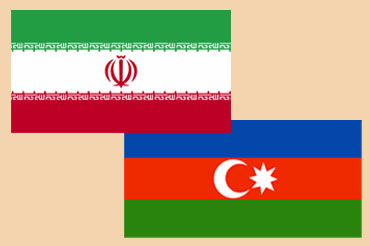Iran holds a 10% share of Azerbaijan’s largest gas field, Shah Deniz, the first phase of which is producing 10bn m3/yr of gas and the second phase is projected to export 16bn m3/yr of gas to Turkey and the rest of Europe.
Moreover, the two countries swap 1mn m3/d of gas and there are ample opportunities for expanding bilateral ties.
The two countries can boost energy ties both bilaterally and multilaterally. There are several potential projects, such as the North-South Corridor with an annual capacity of transporting 10mn my/yr of cargo from Russia and Georgia to Azerbaijan and through Iran to the Persian Gulf. The Europe-Persia Express Gateway (EPEG) extending from Germany to Russia, Azerbaijan and Iran and then to Oman is underway and has 3.2Tbps capacity and the length of optical fiber is 10 thousand kilometers.
In the field of energy, especially gas, Iran has set a target of investing $310bn in a decade in both downstream and upstream projects. Iran with its neighbors constitutes over 70% of the world’s total gas reserves. Iran, Russia, Qatar, and Turkmenistan are the four largest gas holders, respectively.
In March, during the visit of Azerbaijani president Ilham Aliyev to Tehran, the two sides inked 12 MOUs including in the field of energy and exploiting joint oil and gas deposits in the Caspian Sea.
Currently, Azerbaijan produces 41.5mn mt/yr of oil and 30bn m3/yr of gas in the Caspian Sea, the largest share among all the littoral states. Iran holds Sardar-r Jangal oilfield in the Caspian Sea and has listed it along with two other blocks in its new contracts, known as IPC.
Azerbaijan has also two underground gas storages with 5bn m3 capacity, but one third of which is vacant. Gas consumption in Iran, unlike Azerbaijan, is high in winter and low in summer.
Iran can store some portion of its surplus gas in Azerbaijan and receive it in winter. Currently, the same work is being done in the field of electricity because power consumption in Iran, unlike Azerbaijan, is high in summer and low in winter.
Moreover, the South Corridor gas pipeline will be extended from Azerbaijan to Italy and is expected to transfer 16bn m3/yr by the next five years from Shah Deniz to Turkey and Europe and the volume will reach 25bn m3/yr in 2024 and will rise to 31bn m3/yr in the early 2030s. Some portion of the Iranian gas could be transferred to Europe via this pipeline.
Regarding the advantages of Iran for Baku, this country is the holder of the largest gas reserves in the world and produces 265bn m3/yr of raw gas which will be increased to 385bn m3/yr by the next ten years. Iran is planning to export 68-80bn m3/yr by 2021 as well.
In addition, all the neighboring countries of Iran both in west and east need gas and electricity. It seems that Iran can act both in gas export and electricity as a hub in the region. The five Caspian Sea states (Iran, Russia, Turkmenistan, Kazakhstan, and Azerbaijan) hold a total of 85tr m3 of proven gas reserves, equaling 45% of the world’s total reserves.
Statistics say the Caspian Sea states are inevitable to look to European and Chinese markets to meet their energy needs.
Europe plans to reduce its dependency to the Russian gas by 25% by 2020. Europe cannot overlook Iran’s huge gas reserves. Part of the exports can be done in the form of liquefied gas. But, the 9th cross-country gas pipeline project, known as Iran Gas Trunkline-9, is underway which is aimed to transfer 100mn m3/d of South Pars gas to northwest of the country.
Dalga Khatinoglu is NGE's expert on Iran's energy sector and head of Trend Agency's Iran news service

TEHRAN, Aug 8(Shana) - Iran’s Oil Minister Bijan Namdar Zanganeh accompanied by a delegation headed by President Hassan Rouhani is in Baku. Since November 2014, this is Zanganeh’s second trip to Baku.
News ID 266566

Your Comment